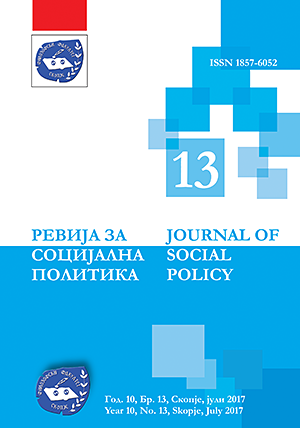Child marriage in the Western Balkan region: Where does the best interest of the child stand?
DOI:
https://doi.org/10.37509/socpol1713009mKeywords:
child, child marriage, the best interest of the child, UN Convention on the Rights of the Child, Social Ecological ModelAbstract
The culturally packed practice of child marriage exists in the Western Balkan region and competes for attention with other complex problems to be duly addressed in national agendas. Even though it is under research and sponsored by structural marginalization of some state-led interventions, this phenomenon has dire life-long consequences on children, in general, and on girls, in particular. Treated as commodities their best interest is disregarded, while gender inequality, discrimination, illiteracy and vulnerability are widened. Lack of adequate data about the prevalence of this phenomenon is backed up with the lack of political will to prioritize this issue at the national level and consistently address it through broad based actors involvement. The best interest of the child implies a threefold, flexible, complex and adaptable concept which puts children first in any decision that affects their life. This paper draws on the Social Ecological Model and the principle of the best interest of the child to highlight the main causes of child marriage in the Western Balkan region. It employs secondary data to examine how it violates the principle of the best interest of the child. Some research gaps have been highlighted mainly related to the lack of consolidated data about the phenomenon of child marriage. Conclusions are drawn and recommendations are provided in order to stop this traditional practice that disregards the best interest of girls.
Downloads
Downloads
Published
Issue
Section
License
The journal allows the author(s) to hold the copyright without restrictions.
The journal allows the author(s) to retain publishing rights without restrictions.










